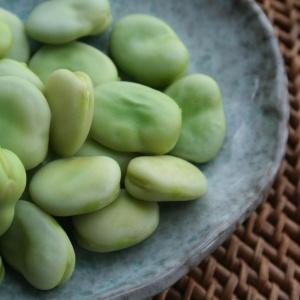
Current crop production levels could feed a population of 9.7 billion people in 2050, according to a recent paper, but only in a future in which there are socio-economic changes, significant shifts in diets towards plant-based foods, and limited biofuel production. Without dietary changes, crop production would have to increase by 119% by 2050.
The paper tracks 2013 levels of production, food losses and average recommended consumption levels of calories, protein, vitamin A, iron and zinc. The figure below shows the results for calories and protein. Currently, the global food system produces more than enough energy, protein, iron and zinc, but not enough vitamin A.

Image: Figure 1 of Berners-Lee et al. (2018).
The paper notes that, while animals can convert grass, pasture and stover (leftover leaves and stalks of field crops) into nutrients that are available to humans, feeding human-edible crops to animals reduces the amount of energy, protein, iron and zinc that is available for people to eat directly. This is not the case for vitamin A: animals provide 214% more vitamin A than they consume from human-edible crops.
The paper looks at scenarios for feeding 9.7 billion people in 2050 based on 2013 production levels.
If diets remain the same in 2050 as they were in 2013, non-food uses of edible crops are eliminated and waste streams stay the same, then there would be a 40 kcal per capita per day deficit in energy supply in 2050.
Eliminating the feeding of human-edible crops to animals would reduce supplies of meat, dairy and fish, but would feed the 2050 population without requiring a reduction in waste and would allow non-food uses of crops to increase.
Eliminating all waste and consumption of calories in excess of average requirements would also feed the 2050 population, although per capita meat, dairy and fish availability would fall.
If, perhaps more realistically, waste, excess consumption and the feeding of human-edible crops to animals were each reduced by half, then the 2050 population could be fed, although meat, dairy and fish availability would fall relative to 2013.
The paper also finds that if diets in 2050 contain more meat, fish and dairy than today (as FAO projections suggest), waste is not reduced and non-food uses of edible crops are maintained at current levels, then a 119% increase in the production of human-edible crops would be required (measured in calories).
Abstract
We present a quantitative analysis of global and regional food supply to reveal the flows of calories, protein and the micro-nutrients vitamin A, iron and zinc, from production through to human consumption and other end points. We quantify the extent to which reductions in the amount of human-edible crops fed to animals and, less importantly, reductions in waste, could increase food supply. The current production of crops is sufficient to provide enough food for the projected global population of 9.7 billion in 2050, although very significant changes to the socio-economic conditions of many (ensuring access to the global food supply) and radical changes to the dietary choices of most (replacing most meat and dairy with plant-based alternatives, and greater acceptance of human-edible crops currently fed to animals, especially maize, as directly-consumed human food) would be required. Under all scenarios, the scope for biofuel production is limited. Our analysis finds no nutritional case for feeding human-edible crops to animals, which reduces calorie and protein supplies. If society continues on a ‘business-as-usual’ dietary trajectory, a 119% increase in edible crops grown will be required by 2050.
Reference
Berners-Lee, M., Kennelly, C., Watson, R. and Hewitt, C.N., 2018. Current global food production is sufficient to meet human nutritional needs in 2050 provided there is radical societal adaptation. Elem Sci Anth. 2018;6(1):52.
Read the full paper here. See also the Foodsource chapter What is a healthy sustainable eating pattern?
For more on the feeding of human-edible crops to animals, see the FCRN’s reports Lean, green, mean, obscene…? What is efficiency? And is it sustainable? and What is a sustainable healthy diet?, Hannah van Zanten’s blog post A role for livestock in a sustainable food system, and the paper Limiting livestock production to pasture and by-products in a search for sustainable diets.
For more on dietary scenarios, see the paper Greedy or needy? Land use and climate impacts of food in 2050 under different livestock futures.







Post a new comment »